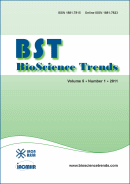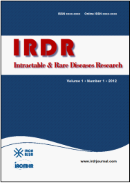Drug Discov Ther. 2022;16(4):148-153. (DOI: 10.5582/ddt.2022.01053)
Binding of phenochalasin A, an inhibitor of lipid droplet formation in mouse macrophages, on G-actin
Kobayashi K, Matsuda D, Tomoda H , Ohshiro T
Phenochalasin A, a unique phenol-containing cytochalasin produced by the marine-derived fungus Phomopsis sp. FT-0211, was originally discovered in a cell morphological assay of observing the inhibition of lipid droplet formation in mouse peritoneal macrophages. To investigate the mode of action and binding proteins, phenochalasin A was radio-labeled by 125I. Iodinated phenochalasin A exhibited the same biological activity as phenochalasin A. [125I]Phenochalasin A was found to be associated with an approximately 40 kDa protein, which was identified as G-actin. Furthermore, detail analyses of F-actin formation in Chinese hamster ovary cells (CHO-K1 cells) indicated that phenochalasin A (2 μM) caused elimination of F-actin formation on the apical site of the cells, suggesting that actin-oriented specific function(s) in cytoskeletal processes are affected by phenochalasin A.







